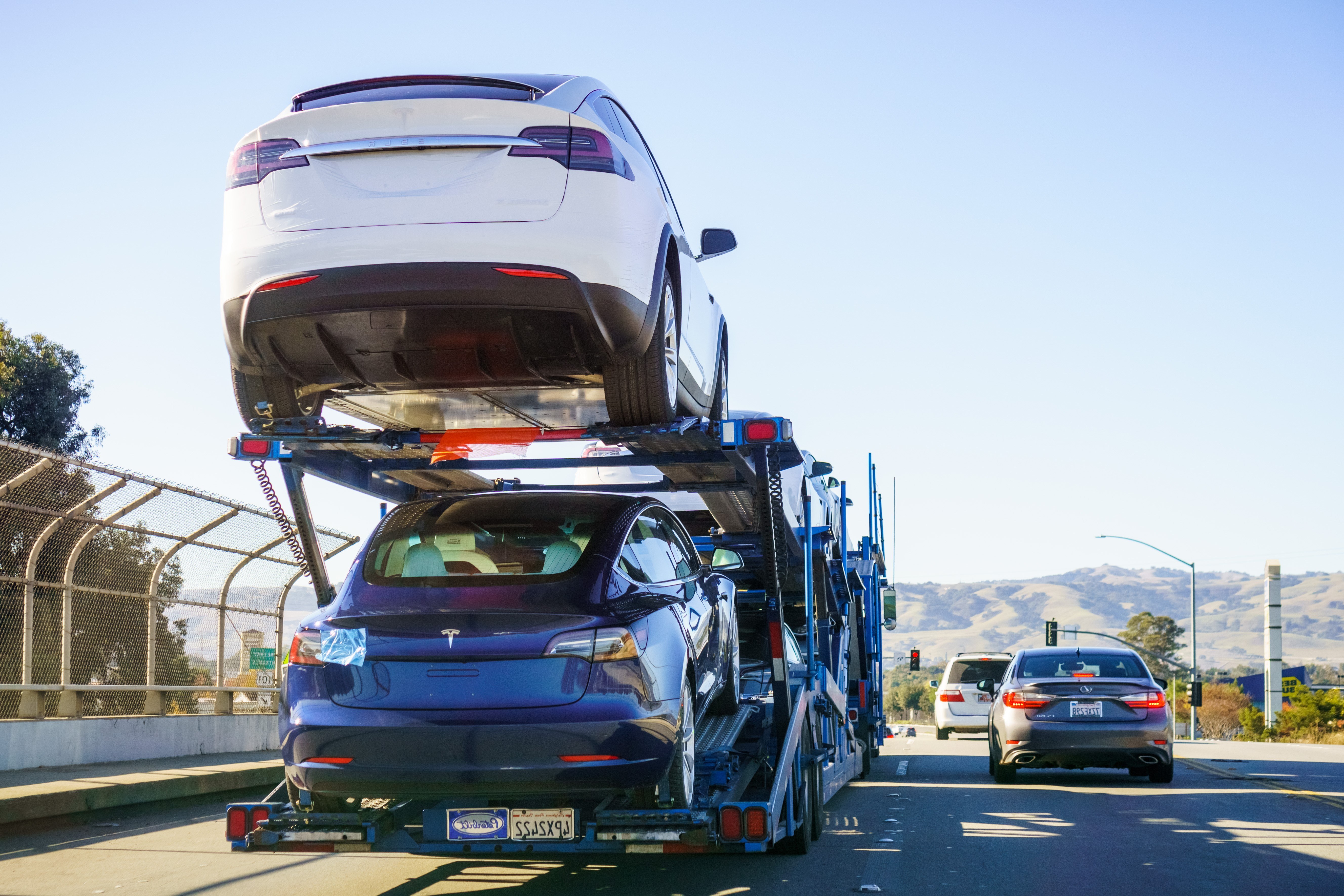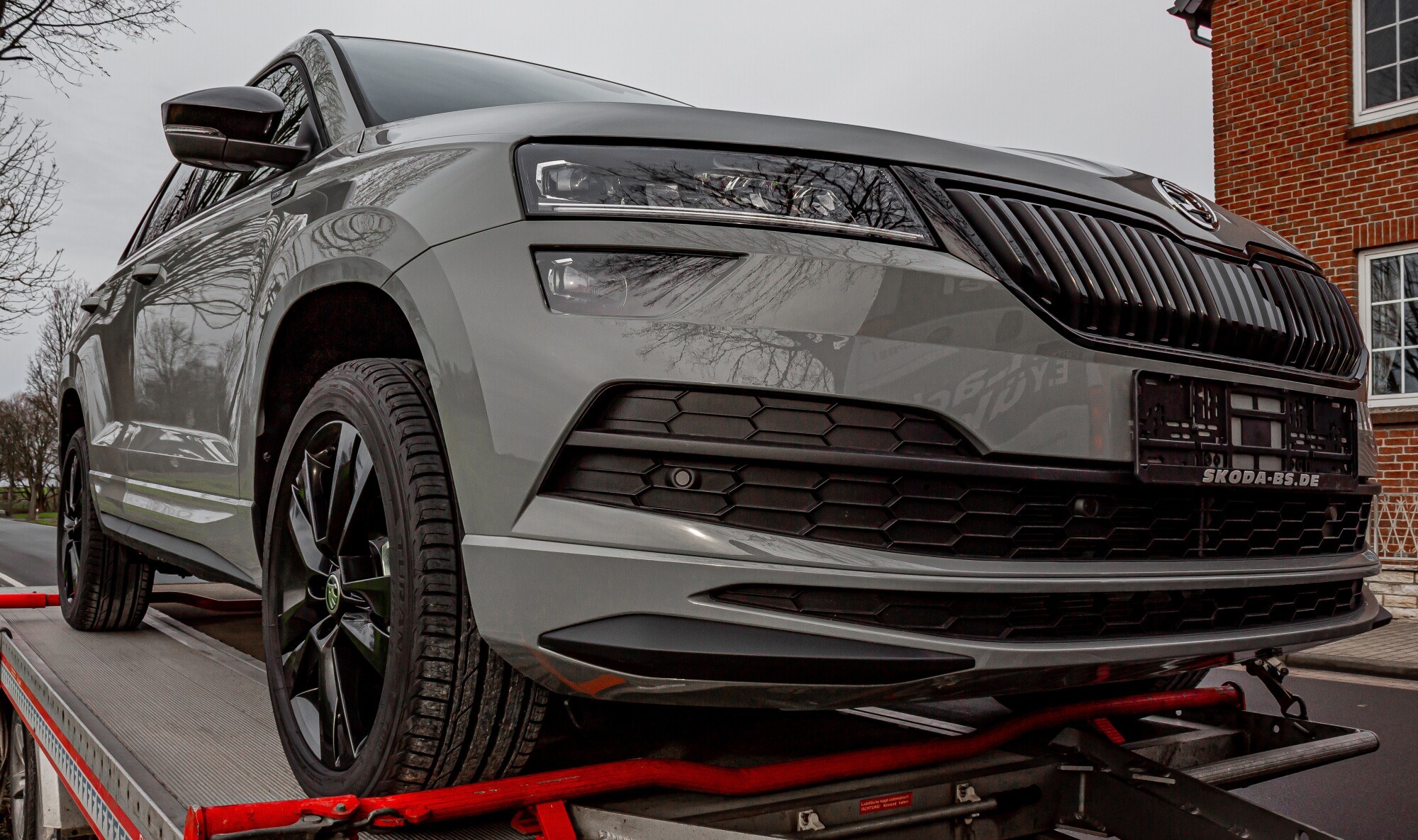Dealer-to-dealer shipping and door-to-door shipping are invaluable pieces of the auto industry equation. Millions of cars are shipped throughout the US annually to tens of thousands of showrooms and sale lots. Auto transport companies facilitate most of these orders, but how are new cars transported to dealerships?
Cars are delivered from the factory floor to the dealership in several ways, including multi-level trailers, cargo ships, and railroads. It's all part of a bustling business for car transport to dealerships nationwide.
Getting Started – Auto Manufacturing to Vehicle Shipping
Once a car rolls off the assembly line in an auto manufacturer plant, it heads to a final inspection before vehicle processing. Vehicle processing involves upgrading a stock vehicle with options like safety or technology features.
Some vehicles are fitted with wrap guards, a protective material for the exterior that prevents scratches during auto transport. When vehicle processing is complete, the car begins its shipping journey to the dealership.
The process is generally the same across manufacturers, but the time it takes for new vehicles to ship a car from the factory to a dealership can vary. Many vehicles are manufactured overseas, so those cars may take longer to arrive. Vehicles manufactured in the United States typically arrive at a car dealership faster.
General Motors, the parent company of Buick, Chevrolet, Cadillac, and GMC, and Stellantis North America, the parent company of Chrysler, Dodge, Jeep, and RAM, operate in the US. Ford Motor Company, the parent company of Ford and Lincoln, is also based in the US. These manufacturers are responsible for a healthy chunk of the vehicles on dealer lots.
Most manufacturing plants are located in the Midwest, including Ford's Kansas City, Missouri, plant—the largest auto plant in the US. Ford's second-largest plant is also in Dearborn, Michigan.
The Midwest locations are for good reason. These plants are in the center of the country, providing easy routes to the East Coast, West Coast, and the rest of the country. In most cases, it only takes a few days for these factory vehicles to reach the coasts or the southern states.
Choosing the Right Auto Transport Method
Manufacturers generally use the following modes of auto transportation to ship cars to dealerships:
Rail
Rail shipping is one of the most cost-effective transport methods for long shipping routes. Most manufactured cars will spend at least some of their journey by rail as most auto plants are strategically located adjacent to railway networks for maximum rail shipping efficiency.
Cars traveling by rail may be loaded directly on car racks at the factory by truck to the railyard. These racks have two decks (bi-level) or three decks (tri-level). Bi-level racks hold about 8-10 vehicles and are used for larger trucks and SUVs. Tri-level racks hold about 15 cars—5 on each level. Tri-levels are used for smaller cars.
Specialized open transport trains used to ship vehicles can hold about 800 cars. Vehicles are loaded using buck loaders, mobile ramps that can be raised or lowered to the decks. Buck loaders make driving a vehicle on and off the train easy.
Exotic cars, custom vehicles, and antique or classic cars may also travel by rail. However, the process is a little different. They are held in enclosed trailers to protect them from potential damage from rain or direct sunlight. Enclosed trailers offer maximum security and protection yet hold fewer cars per load.
Trucks
Rail shipping is cost-effective but not as flexible as truck shipping. Most vehicles travel by truck at some point during transport, especially during shipments to small-town dealers. These car haulers are usually double-deck trailers that can hold about 12 vehicles.
Car haulers have ramps that raise and lower to ensure smooth and quick loading. Once the cars are loaded, they're secured at four points using heavy-duty chains and straps.
Enclosed truck transport is also an option for shipping exotic, custom, and classic vehicles. Like their rail shipping counterparts, enclosed car haulers transport fewer cars than open models. Most enclosed haulers can hold 7 or 8 vehicles.
Ocean
Ocean transport is a primary mode of transport for cars coming to the US from overseas manufacturers or going to dealerships off the mainland in Hawaii or Alaska. Some vehicles may travel by air, but it's rare since airplanes have a very limited cargo capacity.
Container ships, by contrast, can hold a massive load of cars, making them a much more efficient shipping method.
Roll-on/roll-off, or RoRo ships, are specially designed for car transport. As the name suggests, RoRo ships allow cars to be driven on or off the ship. In the past, cars were loaded and unloaded using cranes, which were hazardous for the vehicles and other cargo.
A large, specialized RoRo ship can transport over 8,000 cars or 375 tons, but most car carrier ships can carry at least 4,000 to 5,000 vehicles. The US has five port locations where RoRo ships unload car shipments to ship to dealerships.
Once they arrive at the port, the cars are unloaded and stored to wait for a car hauler. Once the hauler picks up the vehicles, they typically go directly from the port to the dealership, but some may be transferred to rail shipping hubs to travel a longer distance.
The Role of Auto Transport Brokers
Auto transport brokers are essential in getting vehicles from factories to dealerships. Transport brokers also facilitate B2B shipping from dealership to dealership.
Here are some crucial responsibilities of auto transport brokers in the process of delivering vehicles from factory to dealership:
-
Acting as an intermediary between clients and carriers: Shipping brokers match clients (factories and dealerships) with reputable shipping companies and independent car haulers. Brokers save clients time and ensure their vehicles are transported safely and securely.
-
Negotiating rates: Brokers negotiate rates with carriers on behalf of their clients to secure the best deal possible. They leverage their experience and knowledge to ensure fair and competitive pricing.
-
Managing the logistics: Brokers handle the complex logistics of transportation, including scheduling pickup and delivery times, tracking shipments, and addressing any delays or obstacles that come up.
-
Providing expertise: Brokers understand the ins and outs of the auto industry and can guide clients to ensure the process goes smoothly.
-
Ensuring compliance and safety: Brokers ensure that carriers are licensed, insured, and compliant with local and federal regulations for safe, legal car shipping.
On the Road – The Logistics of Auto Transport
No matter the mode of transport, cars must be loaded and secured to ensure their safety during shipping. However, the process can vary by mode of transport.
With open trailers, cars are driven onto the trailer and parked in their assigned spot. For enclosed trailers, cars may be loaded using ramps or lift gates. Once loaded, cars are secured using straps, chains, or wheel nets to keep them in place during transport.
There are several regulations and safety measures shipping companies must abide by to protect new cars during transport, including:
-
Licensing and insurance: Auto transporters must be licensed and insured to operate legally.
-
Chain of custody: When vehicles change hands along a shipping route, each change in possession requires an inspection to identify and report any damage.
-
Vehicle inspections: Before transporting cars, car haulers conduct inspections to notate existing damage as proof of potential damage claims upon arrival.
-
Driver credentials: Car haulers must meet certain qualifications, such as having a valid commercial driver's license and a clean driving record, to transport cars and drive large trailers.
-
Route planning: Shippers must plan routes extensively to avoid hazards and minimize the risks of shipping delays or damage. Such planning includes bypassing transport routes that can't accommodate the size of the vehicle.
Shipping is usually a safe, smooth process. However, there are potential challenges carriers may face along the way, including:
-
Inclement weather, such as slippery roads or poor visibility in fog or rain, may reroute shipments or cause delays.
-
Logistical delays may occur due to traffic, road closures, or other unforeseen circumstances.
-
Driver shortages may require backup drivers or alternate planning.
Experienced shippers can manage these potential challenges by keeping consistent communication between clients and drivers, relying on GPS tracking and route planning, and monitoring shipments. There are often contingency plans in place to address unexpected challenges, such as rerouting a shipment.
The Final Mile – Car Delivery to Dealerships
Most new cars are driven 25 miles or less during factory transport, transport loading, and moving through storage lots.
When the car arrives at the dealership, it's inspected one final time to check for dents, dings, scratches, or other damage. If it's clear, it's washed and detailed before being sent to a showroom or lot to sell.
From the Factory to Your Local Dealership
Shipping cars from a manufacturing plant to local dealerships involves long hauls, multiple routes and modes of transport, and much planning. The combination of ships, trucks, and trains – guided by the planning of experienced auto transport brokers – ensures that vehicles make their way from the factory to the showroom as efficiently and damage-free as possible.
Nexus Auto Transport is an A+-rated, BBB-accredited auto shipping company specializing in road transport. We connect dealerships, manufacturers, and private clients in all 50 states to reputable, fully insured auto transport services.
Are you a car dealer? Visit our brand-new dealer portal for access to local and nationwide car selling leads. Portal membership also comes with access to our array of full shipping management services.
Call us at (224) 218-2949 or visit our instant car shipping calculator for a free quote!



